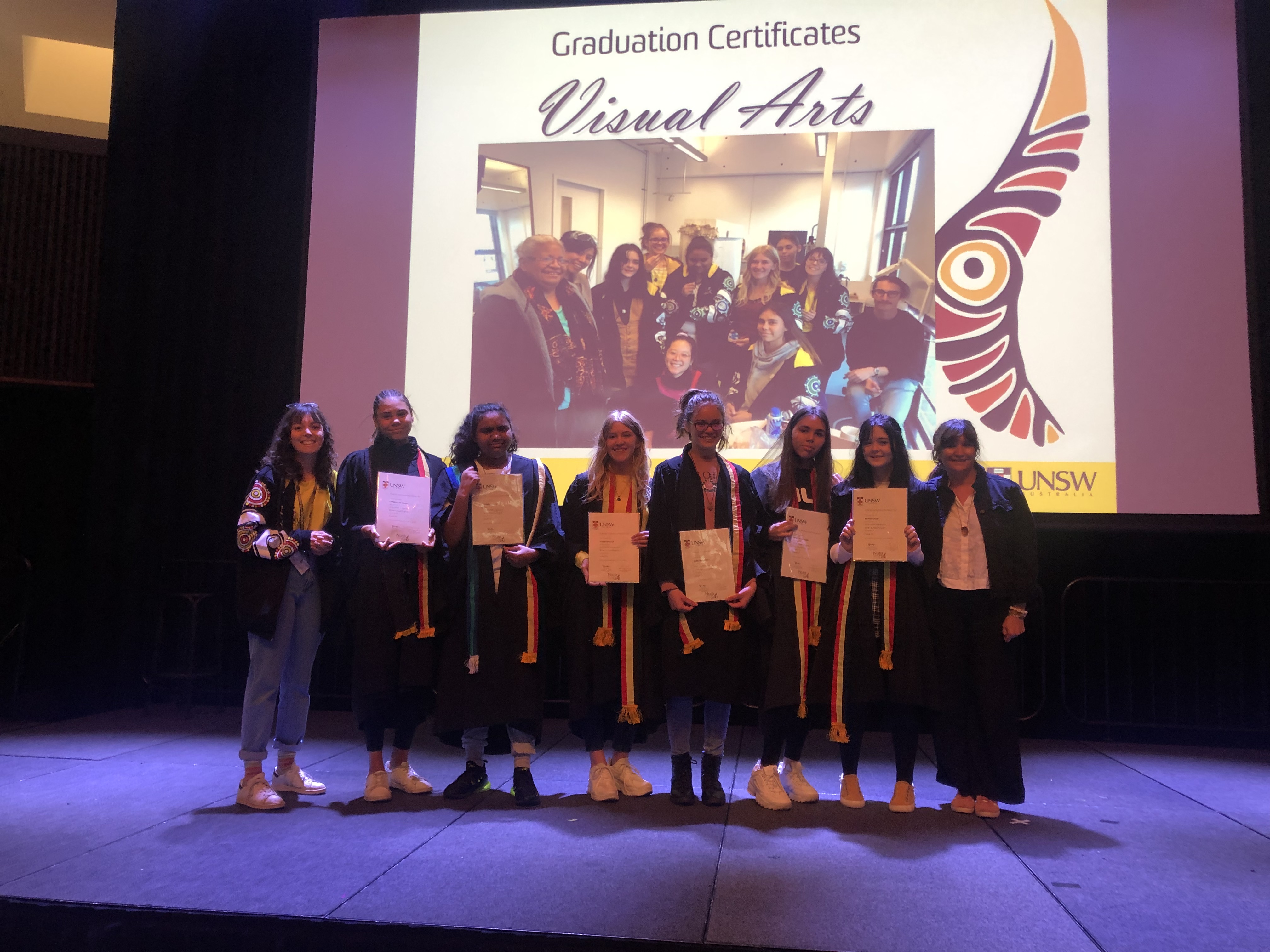
Budding artist Shailee Willets was unsure what Nura Gili Winter School would entail when she arrived, but by the end of the week she was committed to studying Art and Design in 2020 at UNSW Sydney.
“I really knew nothing about UNSW before I came, except that it had a pretty good art school,” said Ms Willets, from Scone in the NSW Hunter region. “It was my art teacher, Crystal Davis, who encouraged me to apply. I went to another orientation program at a different university, but it was just general, they don’t do Arts there. One of my friends mentioned the UNSW Nura Gili Winter School so I applied for it and was very pleased to be accepted for my first choice.”
Nura Gili Winter School is an opportunity for Indigenous high school students from all over Australia to get a taste of what life is like at UNSW. It is open to students in Years 10-12, who live on campus for a week and are introduced to tertiary studies in an academic area of their choice.
The students get to experience university life with other Indigenous children and are guided and nurtured by a team of professors, students and other UNSW staff. The Winter School program features a range of interactive activities, cultural workshops, lectures and insights into life at UNSW, including a graduation ceremony on the final day where the students don graduation gowns.
The 100 Indigenous students who attended this year’s Winter School ranged from those from remote areas who had never been to Sydney before, to locals who were university-savvy and had attended similar programs at UNSW and other universities. They included several school captains, some being the first Indigenous school captain at their school; and siblings of current UNSW students and previous Winter School attendees who had encouraged them to apply.
Like many attendees, Ms Willetts said friendships made during the week were one of the highlights, with the prospect of “having people you already know at UNSW when you come to study here”, she says.
“You already have some connections, some neat friends in the making. And it’s an orientation to get to know where everything is, get an idea of what coming here to uni will be like.”
Ms Willetts spent most of her time at the Art & Design campus in Paddington, but still had enough activities on the main Kensington campus to get an idea of where everything is.
Her advice to other Indigenous high school students not sure of the next step is that they should apply for Nura Gili Winter School. “Even if you have no idea what you're going to do, you can get a good idea of what’s involved. You might not find out exactly what you want to do, but you will definitely get a taste of what university will be like, what your subject will be like.”
Indigenous Program Director for the Art and Design Faculty, Tess Allas, says it’s also an opportunity for her (and other UNSW academics) to see the next generation of talent coming through; in her case the artists and designers.
“It’s great being able to show them the different faces on campus and the different demographics. They get to explore the University which lets them know our campus is not a scary place,” says Ms Allas.
“UNSW is an incredibly welcoming place. And the students get to see how things work between all the faculties and Nura Gili. We work very closely with Nura Gili and the kids come here and see that and I think they get a bit of comfort from that.”
The Art & Design school at UNSW has a long and rich history, tracing its origins back to the establishment of The Sydney Mechanics’ School of Arts in 1833. It has variously been known as Alexander Mackie College, City Art Institute and UNSW College of Fine Arts (COFA) and is committed to education, practice and research in art and design.
Ms Allas says some of the artists that graduated from the school include Rea, Gordon Hookey, Brook Andrew, Brenda L Croft, Frances Belle Parker, Jessica Birk, Lucy Simpson, Arone Meeks, Clinton Nain, Teho Ropeyarn, Dennis Golding and Carmen Glynn-Braun.
Speaking about the Winter School, Director of Nura Gili Indigenous Programs Unit, Associate Professor Reuben Bolt said the program helps break down the idea that university is not an option for Indigenous students.
“They experience first-hand the services and programs that Nura Gili has to offer, and they meet our staff face-to-face. They become immersed in the family culture that we espouse and are made to feel welcomed from day one. This is a critical component of the program, particularly given the community narrative that has for so long advocated for universities as institutions for the elite,” says Professor Bolt.
“We are able to change the story for Indigenous students within one week by giving them the personal experience of campus, the discipline-specific knowledge and the friendly and culturally sensitive support they may need.”
More information can be found at Nura Gili Centre for Indigenous Programs; Nura Gili Winter School and UNSW Art & Design.
